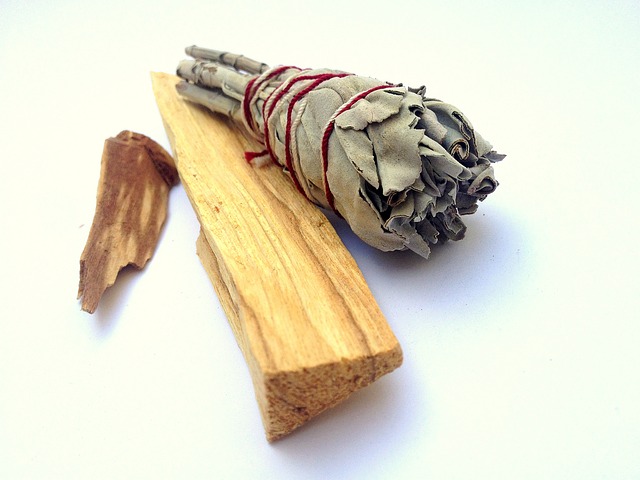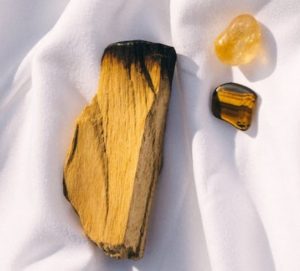Last Updated on January 23, 2023 by IncenseJunction
Palo Santo is becoming quite popular in the market. Although you might see this as a good thing, the rise in demand has also brought about some fake or inferior types of Palo Santo. It is quite unfortunate that most shops are using this chance to present fake Palo Santo to their customers. If you have experienced some real Palo Santo, it is quite easy to understand why it is important to get the real deal.
We have conducted extensive research and have come to realize that there isn’t much information on how to tell if Palo Santo is real. After extensive research on this sacred wood, we came up with a detailed and clear way of differentiating the authentic from the fake. If you know what to check, it is quite simple.
Identifying the Authentic Palo Santo
One obvious major issue is that most of the shops that are selling inferior Palo Santo are selling wood that is harvested before their time. In this case, it will not have any of the calming or healing effects. Not to mention, that it is a bad way of looking out for the environment.
If the wood is harvested earlier than necessary, it will have a lighter color, And the wood’s grain won’t have any streaks that have a dark amber color.
Palo Santo Buying Guide
- First, you need to consider how Palo Santo wood has been harvested. The authentic Palo Santo should only come from trees that have died naturally. The process of aging of the tree will involve a tree that has fallen naturally and then aged for around three or five years. There are certain cases in which the tree ages for around 10 years. It is a common idea that oil that is produced inside that wood will have some terpenes that are brain-oxygenating. These include a-terpineol and limonene. These are the elements that bring about a positive and uplifting effect that you will experience when you are burning that wood. The older trees will usually feature denser oil and the wood’s grain will have dark amber color. That will only be the case if these oils have occurred ethically and naturally.
- The second thing you should be able to note easily is the wood’s color. There is a fine real vs. fake Palo Santo difference. However, that small difference will prove to have a great impact on what you get. So, you want to find a wood that is darker and features some amber streaks in the wood’s grain. These dark colors and amber streaks are usually denser oil. The wood that is harvested earlier than necessary will usually have a light appearance without the streaks. You should know that this wood with a light appearance does not have any fragrance. When burnt, this wood will simply have the smell of regular burnt wood. On the other hand, when you burn a darker wood that has several streaks of amber, it will produce an amazing fragrance and will give out a calming effect.
- The odor is the third way of telling if you have purchased authentic Palo Santo. The real Palo Santo has the odor you would expect, although it might not be so strong. After all, it is wood. This is quite normal. In some cases, although not always, the suppliers of Palo Santo might apply the Palo Santo oil on some older woods so that they may appear to be high quality. The result? The Palo Santo with applied oil will have an extremely strong odor. However, it is hard to identify if it is high quality because, after all, the scent is strong. Also regarding the scent, you can simply shave strips off the wood so that the interior of the wood is exposed. Put these shaven strips close to your nose so that you can smell the interior. In case it produces the Palo Santo fragrance from within, there is a high chance that it is a plank of authentic and high-quality wood. It is good enough to use in this case.
- If you want to know how to tell if Palo Santo is real or not, then you should check the fourth sign, which is the smoke. Palo Santo will produce a certain black smoke when on fire. However, when you put the fire out and the stick starts glowing, the smoke should turn white. In some cases, your Palo Santo will continue producing black smoke even after putting out the fire. That is a symbol of lower-quality wood or even oiled wood. When Palo Santo is burning and producing the amazing fragrance you expect, there should be some natural oils that are rising to the wood’s top. The appearance will depend on the amount of oil that is present in the wood. It might have a glossy appearance.
- In some cases, if it has a lot of oil, it could have some slight drips. In case you do not notice any oil rising, it might be a sign that the wood is stale. It could even be a completely different wood.
Palo Santo might have different variations in density. However, it typically features a softer type. Sometimes it might be denser naturally. Nevertheless, you should have the ability to carve some pieces off with your knife. You can even chisel it with the use of a chisel and hammer. But do not forget. This is still wood and it does not necessarily have to snap in half when you apply brutal force.
Also, read:
How do you know if Palo Santo is ethically sourced?
When it comes to buying Palo Santo – a fragrant, mystical wood used for spiritual and holistic purposes – it is important to know that it is ethically sourced. Being aware of where the wood comes from and how it is harvested is essential to being a responsible consumer.
Palo Santo is a wild tree found in Mexico, Peru, Bolivia, and Ecuador. Harvesting Palo Santo is a delicate process that requires careful consideration and respect for the environment. Without proper harvesting methods, the populations of these trees can be damaged, leading to deforestation and environmental destruction.
For this reason, it is important to be sure that any Palo Santo you purchase has been sourced responsibly. Here are a few ways to tell if Palo Santo has been ethically sourced:
1. Source: Make sure that the vendor you are buying from is getting their Palo Santo from a responsible source. Ask them questions about where they get their wood and look for certifications like FSC (Forest Stewardship Council) certification, which ensures that products come from responsibly managed forests.
2. Harvesting: Responsible harvesters of Palo Santo will only pick branches that have already fallen from the tree and will never damage the tree itself. They will also replant the trees in order to ensure their continued growth.
3. Sustainability: Look for vendors who practice sustainable harvesting methods such as selective cutting and replanting. Sustainable harvesting helps to ensure that the population of these trees is maintained.
4. Certification: Some vendors may be certified as sustainable harvesters or may have certification from organizations like the Rainforest Alliance. These certifications guarantee that the products you purchase have been sourced responsibly.
Buying ethically sourced Palo Santo is not only beneficial for the environment, but it also helps to support the local communities that depend on these resources. By purchasing responsibly sourced wood, you are helping to protect the environment and the livelihoods of the people who harvest it.
Conclusion
Shopping is becoming more of an online process. As it becomes more popular, it becomes difficult to know what you will get. You might read about a company or the description of the product, which is great, but to be honest, the description might be completely deceiving.
Therefore, what should you do? You should always check out the reviews that people have left on a certain product. Some reviews will even have photos or videos, which will help you a lot in identifying fake Palo Santo.





Do you know of companies that sell authentic Palo Santo wood, oils and candles?
I myself had purchased “fake” woods.
Thank you
I can’t provide real-time information on specific companies or their current offerings, However, I can give you some general guidance on finding authentic Palo Santo products:
Specialty Stores: Look for specialty or metaphysical stores in your area or online that sell Palo Santo products. These stores often source their products from reputable suppliers and may carry authentic Palo Santo wood, oils, and candles.
Natural Health Stores: Some natural health stores and wellness shops carry Palo Santo products. These stores may prioritize authentic and sustainably sourced items.
Fair Trade Organizations: Organizations that promote fair trade practices often work with artisans and communities that produce Palo Santo products sustainably. Purchasing from these organizations can ensure you are buying ethically sourced Palo Santo.
Read Reviews: If you’re buying online, read customer reviews and ratings to get a sense of the authenticity and quality of the Palo Santo products from a particular seller.
Ask Questions: Don’t hesitate to ask the seller or manufacturer about their sourcing and production methods. Reputable sellers should be transparent about the origin of their Palo Santo and how it is harvested.
Certifications: Look for products that are certified by organizations that promote sustainability and ethical sourcing, such as Fair Trade or Forest Stewardship Council (FSC) certification.
Price: Authentic Palo Santo is relatively expensive due to its scarcity, so be cautious if the price seems too good to be true.
Local Artisans: In some regions where Palo Santo is grown, you may find local artisans or cooperatives that sell handmade Palo Santo products directly. Purchasing from them can support local communities and ensure authenticity.